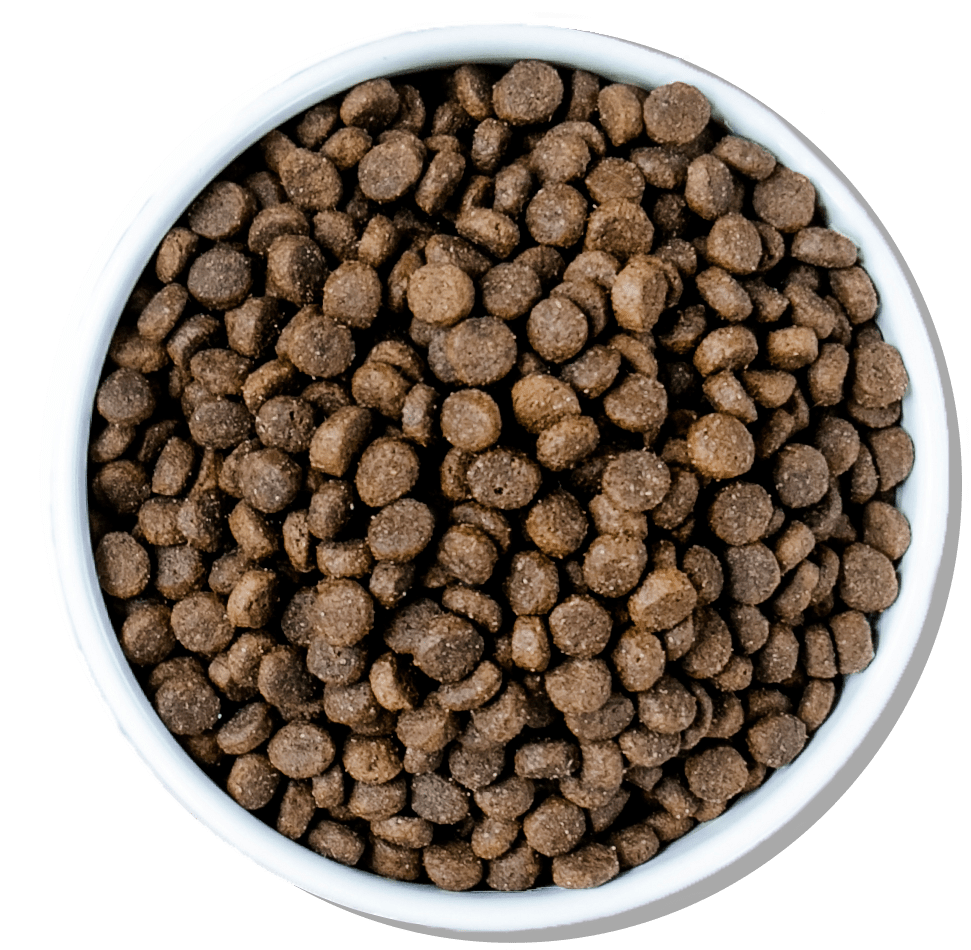
In my 15 years raising Labs I have heard a lot of conflicting information about scientific studies surrounding glucosamine and chondroitin for Labrador joint health. In addition to the science, there are quite a few opinions on the internet of people giving their two cents. Often, these opinions come with no real science to back up their opinions. I’ve taken a few months reading everything I could and have this conclusion for you. It comes in a few parts.
The questions I will address are:
1) Should I be giving my dog glucosamine/chondroitin?
2) Should I be giving my dog Omega 3 or fish oil?
3) Do these supplements help a dog who is diagnosed with arthritis?
4) Should I give these supplements to a healthy dog?
And finally, 5) Are supplements as safe and as easily absorbed as getting this nutrition naturally?
I will touch on #4 a bit later in the blog. But, know that the short answer is yes to giving a healthy dog the required amount of glucosamine, chondroitin and omega 3’s in their diet. But first let’s talk about an aging dog who has been diagnosed with Arthritis.
How can we understand joint pain in our Labs?
Think about a 10 or 12 year old dog and how they get around. The issue here is that they can’t tell you they are in pain. They may run and play like they were 2 years old and may never show you that they are uncomfortable. Teaching them to talk is out of the question so I want you to think about it this way.
At this age they are close to the end of their lives. They have likely had a great life of running, fetching, swimming, jumping and don’t forget the zoomies! I try to get people to make the comparison of a human at the end of their life. It’s hard to understand that with a Lab who won’t tell you their knees are killing them.
So a human at the end could be 75, 85 or 90 years old. Watch an elderly human try to get in and out of the car. Or walk up or down stairs, or get up out of a chair. Their bodies have carried them for a long time and pretty much everything is aching in their bodies. Now of course this isn’t true for everyone. Most people, that age experience their bodies and joints break down. Their bones begin to rub together where they shouldn’t and this causes inflammation and pain in the joints. This happens both while at rest and while active.
Elderly dogs are like elderly people
So think of your elderly poochie as a senior citizen who is experiencing some sort of pain in their joints. Arthritis can affect the hips, lower back, knees, wrists or elbows and statistically affects one in 5 dogs. Large breed dogs tend to be more prone to Arthritis, this is no different for the Labrador. Providing them with a treatment dose of glucosamine, chondroitin and omega 3 is highly effective in relieving pain and aiding joint repair. More on the dosage and treatment later.
So what about younger Labs? Should I be supplementing their diet with these three things? Well here is what the research has pointed to. As a dog ages its ability to produce the proteins that repair and strengthen joints diminishes significantly. This greatly increases the risk for dysplasia, arthritis and patellar luxation (a joint popping out of place).
Glucosamine and chondroitin can help 90% of senior dogs and improve Labrador joint health
There are some estimates out there that 90% of senior dogs have arthritis in at least one joint. Another big issue is that an overweight dog places more stress on the joints. This leads to greater pain, less activity which ends up making them even more overweight. If you have an overweight dog lean them out right away. If your overweight dog is young you can save them years and years of unnecessary stress on their joints. This makes their golden years a little more pain free.
In younger, healthy labs it is suggested to give them these joint protecting nutrients from the time they are finished growing onward. This is recommended especially if you have a very active dog. Dogs such as a hunting dog or dogs who compete in agility competitions or accompanies you on your daily runs.
So we have two separate situations regarding joint health. A dog who is arthritic and a younger healthy dog. What supplements are healthy for them and how much should you give? Well if your dog requires medical care for its joints, it is important to get advice from your veterinarian to help you make your decision, however I will briefly discuss the different forms of these nutraceuticals and how absorption, quality, price, and toxins all come into play. This is all specific to glucosamine and chondroitin for Labrador joint health.
How are these joint supplements absorbed?
Let’s first look at absorption of a supplement. There are conflicting reports on how much of a supplement in the form of a pill is actually absorbed. Some reports suggest that the body has a difficult time recognizing the supplement. Many times, much or most of it is discarded in the urine. I have not been able to pin down an exact number of the absorption rate of glucosamine, chondroitin or omega 3 from salmon skin but on a personal note, I am of the school that food should be as naturally consumed as possible—unless you are a doggie astronaut, then you will have to settle for a tube of food or a pill.
A second issue to consider when buying a processed supplement in the form of a pill is that because it is herbal, it has not been tested by the Food and Drug Administration (FDA), it might not have any of the claimed ingredient in it! In fact, consumer lab. Com found one joint supplement to have only 0.5% of the advertised amount of chondroitin, another no chondroitin, and a third contained arsenic. Yes, arsenic.
Because herbal supplements are not tested, unless you test them yourself, you really don’t know what is in them. Here is the standard FDA statement on a herbal supplement bottle.
Dangers of natural or herbal supplements
FDA Disclaimer. The statements made regarding these products have not been evaluated by the Food and Drug Administration. The efficacy of these products has not been confirmed by FDA-approved research. These products are not intended to diagnose, treat, cure or prevent any disease.
What that means is the FDA cannot be sure exactly what is in the pill or powder. This leads me to mentioning China. At the time of writing this there is much talk about China due to the spread of Covid-19. I’m not here to bash any country, and certainly there are other countries that need to be carefully considered when feeding yourself or your pet a supplement or a food.
The problem is that because these herbal or natural supplements are not regulated in Canada and the USA, and in other countries they have different standards than we have, you can’t really be sure what is in something unless you test each bottle yourself. Of course they are less expensive which may be tempting, but there also may not be any of the promised ingredient present. For me it’s a risk with my dogs I’m just not willing to take.
And its not just one agency reporting toxic levels of chemicals in natural supplements, this has also been reported in the Canadian Veterinarian Journal.
Natural ways to get glucosamine and chondroitin for Labrador joint health
So far I have been on the path to suggesting ingesting glucosamine, chondroitin and omega 3 naturally because it will be naturally absorbed and because it is not processed and turned in to a pill or a powder, shouldn’t contain any toxic substances. Again, that is if you get these things from a reputable Canadian or American company.
The most natural way for your dog to avoid the risk of ingesting these toxins and get the joint health nutrition they need is via two treats. A 6” Beef trachea treat contains approximately 1400mg of glucosamine naturally. It not only also contains chondroitin as well, it is excellent at cleaning your dog’s teeth and here is the best part. If you put a pill or a beef trachea in front of your dog, which one do you think will cause uncontrollable drool? That’s right they absolutely love them and you can stuff them with something or just let them eat it alone. In fact, one of the most expensive supplements for glucosamine and chondroitin is made from…… can you guess? That’s right, beef trachea.
How can beef trachea treats help?
Beef trachea helps to stimulate cartilage growth, lubricate joints, inhibit cartilage destroying enzymes which all helps lessen the pain in an arthritic dog and aids repair in a non-arthritic dog.
A powerhouse combination with beef trachea is to combine it with, again natural, omega 3’s in salmon skins. The Omega 3 in salmon skins help reduce chronic inflammation and also helps to reduce a healthy dog’s risk for joint issues. In addition, it helps relieve arthritis pain, promotes healthy heart, brain, immune function and shiny healthy coat. Again, imagine a spoon pill of omega 3 fish oil or a nice salmon skin for your dog to eat. She’s not going to consider the absorption rate she is just going to want to eat it all up!
How long glucosamine and chondroitin for Labrador joint health take to work for older dogs with arthritis?
For an arthritic dog, these foods won’t work the day you first give them. Rather over the course of a few weeks or month you should begin to see gradual improvement in your dog’s mobility. It should also be noted that CBD oil will help reduce inflammation of the joints. You can read more on that here. With non arthritic dogs, for prevention give them about a 3” piece of trachea every day. Or sometimes every other day and also combine that with about half of the palm of your hand of a dehydrated salmon skin.
Older arthritic dogs (remember the comparison I made to an 80-year-old human?) we give a whole 6” trachea and a palm sized piece of salmon skin. This of course will depend on how much your dog weighs and also if they have arthritis, how severe it is. You could start with the smaller amounts and slowly work upward over the course of a couple months until you see some relief.
Beef Trachea and Salmon Skins are not only treats, they are food, and in order to maintain a healthy weight for your dog you shouldn’t simply add these to their diet. It would be reasonable to reduce their food slightly by approximately the same amount of calories you are adding when you give them the treats. Being natural they are healthy in many ways for your dog beyond the joint care.
What we use for glucosamine and chondroitin for Labrador joint health
We will use of course the treats from www.olddawgtreats.com because we know they are all natural, have nothing added and only have the water removed by the slow dehydration process thus leaving most of the nutrition from the original raw product. The less a product is processed, the closer to natural it is and the more naturally the nutrition is absorbed.
The Old Dawg Treat Co. has a bulk pack joint powerhouse of beef trachea and salmon skins that is discounted to the consumer. Depending on how much you give your dog this joint-repair super food will last between one and three months. Your dog’s drool meter will be off the charts because they love the taste and the bulk pack is shipped to your door for free. A naturally absorbed source of glucosamine, chondroitin and omega 3’s your dog will love with no toxins or concerns coming from another country.
So there is the result of my research. I went into this believing that glucosamine and chondroitin for Labrador joint health really hadn’t yet been proven to help. But, from my readings there has been some dramatic improvement for arthritic dogs. I learned something new and will be supplementing younger dogs in a preventative way to aid joint repair once they are fully grown to help keep them healthy long into their golden years.




